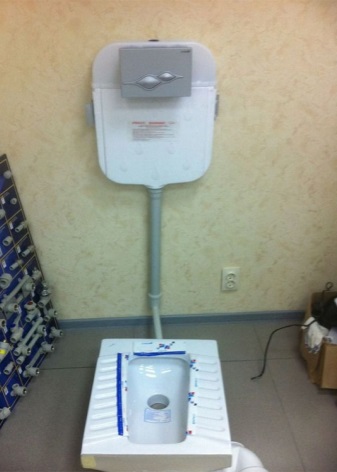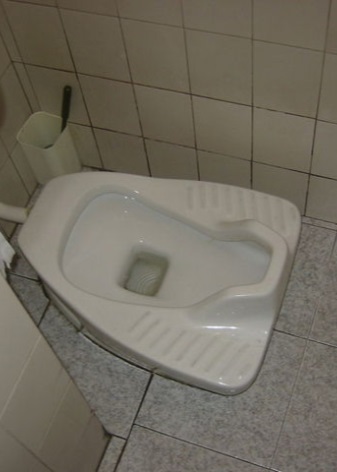Bowl Genoa - Floor standing toilet bowl
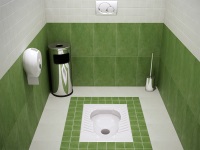
Not many people know that the familiar to all, without exception, type of toilet bowl, mounted directly in the floor and used in public places has a beautiful name "Genoa bowl". This design is also called "Turkish toilet", as it is widespread in the countries of the East and Asia. Genoa Bowl is popular among Muslims because of the Islamic etiquette that forbids men to go to the toilet standing.
In addition, floor toilets have a number of undoubted advantages: they are inexpensive, easy to install, hygienic, resistant to wear and tear and mechanical damage. That is why the toilets of this type are installed in places with a large flow of users: in medical institutions, schools, dormitories, trains, etc. For such places the Genoa bowl is considered the best option, especially in terms of hygiene, because when using this design with the toilet bowl only the shoe sole is in contact.
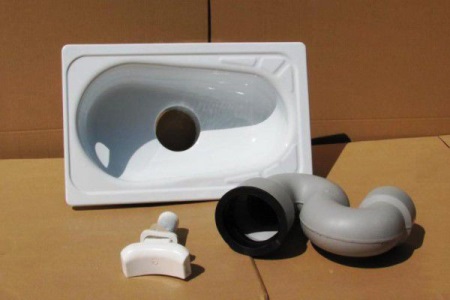
The device
- The cistern The Bowl Genoa is usually mounted on the wall, and sometimes is embedded into the wall - in order to protect against vandals and for better aesthetic design. The most common are medium and high cisterns for this type of toilet - that is, fixed directly above the bowl and connected to it with a long tube.
- Flush valve - is an alternative to the bull flush. It is a long, curved spout with a valve that regulates the flow of water from the water supply. The flush faucet is used to keep Genoa bowls and urinals clean. This device has the following advantages over the flush cistern: it takes much less space, it does not form leaks, allows a continuous supply of water. The disadvantages of the flush valve include the tendency to form clogs and the need for constant pressure in the pipes.
- Siphon - Is an essential element for toilets of any design. It has two main purposes: removal of water and waste products, as well as protection against the penetration of unpleasant odors in the room. The latter becomes possible thanks to the special shape of the siphon - its body forms a curve, in which there is always a small amount of water, serving as a kind of barrier. Genoa bowl siphon should be chosen depending on the outlet of the toilet bowl: they come in horizontal, oblique and vertical.
- Spout - is an attachment on the faucet spout or on the shower head, which provides optimal density and direction of water flow. Often used for WC pans with hygienic shower function or for bidets.
- The pre-wall installation system - is a rigid suspended structure that connects all the elements of the Genoa bowl. Such systems are made of durable, corrosion-resistant materials and can withstand a load of several hundred kilograms. Installation system is usually mounted on a solid wall and hidden behind the partition. Only the flush plates remain visible.
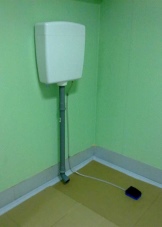
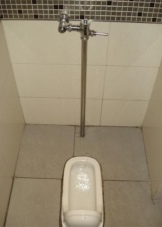

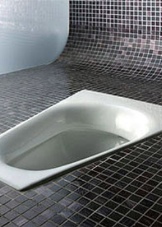
Materials of manufacture
Cast iron
The very first sanitary equipment was made of this material, but cast iron long ago began to give up positions, and give way to more modern and lighter materials. The cast-iron floor toilets have one undoubted advantage - their service life is incredibly long. They stand in public toilets for decades and do not break down. Cast-iron Genoa bowls are the strongest, most inexpensive, but also the heaviest - they weigh about 15 kg, which significantly complicates their transportation and installation.
Ceramic
The most popular materials for the production of Genoa toilets are porcelain and sanitary ware. In terms of their characteristics, they are very similar: they share an aesthetic appearance, low weight, resistance to mechanical damage and insistence on cleaning agents. However, when choosing between these two materials (by the way, the price is also about the same), experts in the field of sanitary equipment advise to give preference to porcelain, as it is more resistant to odors and dirt.
Steel
Floor toilets made of this material have been produced for quite some time. The advantages of steel bowls Genova include indiscriminateness in care and durability. In addition, steel is good at absorbing unpleasant odors. The disadvantages of such toilets are quite serious: they cost more than their cast iron and metal counterparts and, in addition, do not absorb the noise of pouring water at all, so in the process of their operation there is quite an unpleasant sound.
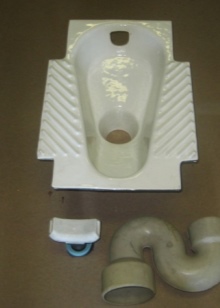
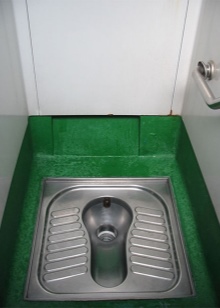
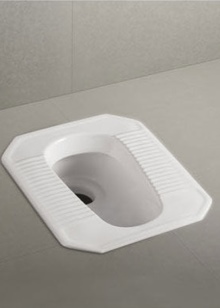
How to install?
Install the bowl Genoa simple enough - for this you only need to stock up on the necessary tools and materials and follow the sequence of steps:
- First you need to decide on the method of installation. Typically, floor toilets are mounted in one of two ways: directly on the tile or on taffeta (decking made of wooden boards, pre-treated with a compound that protects against rot and mildew).
- If you chose the latter method, you should first prepare the wooden board. Coat it with olive oil and let it dry. Experts advise to hammer a few long nails into the back side of the board, so that they stick out two centimeters - this will ensure greater stability of the construction.
- The area on which to install the toilet Genoa, pour concrete and strengthen the board in it. When the mortar hardens, set the bowl on the floor and secure it to the boards, screwing fasteners into the mounting holes.
- If you decide to install the Genoa Bowl directly on the tile floor, first of all, you need to make a fitting of the new device. Place the toilet at the designated place and make a marking, marking the places where the fixing holes will be made. At the same time, check whether the outlet of the toilet corresponds to the position of the sewer pipe.
- Drill holes in the tiles. Install the Genoa bowl in place and secure it with wall plugs. Connect the outlet of the toilet bowl to the sewer pipe. The cistern is installed and connected according to the instructions.
- For the most simple models of bowls Genoa, which are used in public toilets, more suitable next method of installation.
After installing the fittings and drain trap, build a solid pedestal, which will support the edges of the toilet bowl. Drainage hole of the bowl in this case should coincide with the siphon. After installing the toilet bowl, secure it to the retaining structure with cement mortar. To make the bathroom look more aesthetically pleasing, after the cement hardens, cover the Genoa bowl with ceramic tiles.
